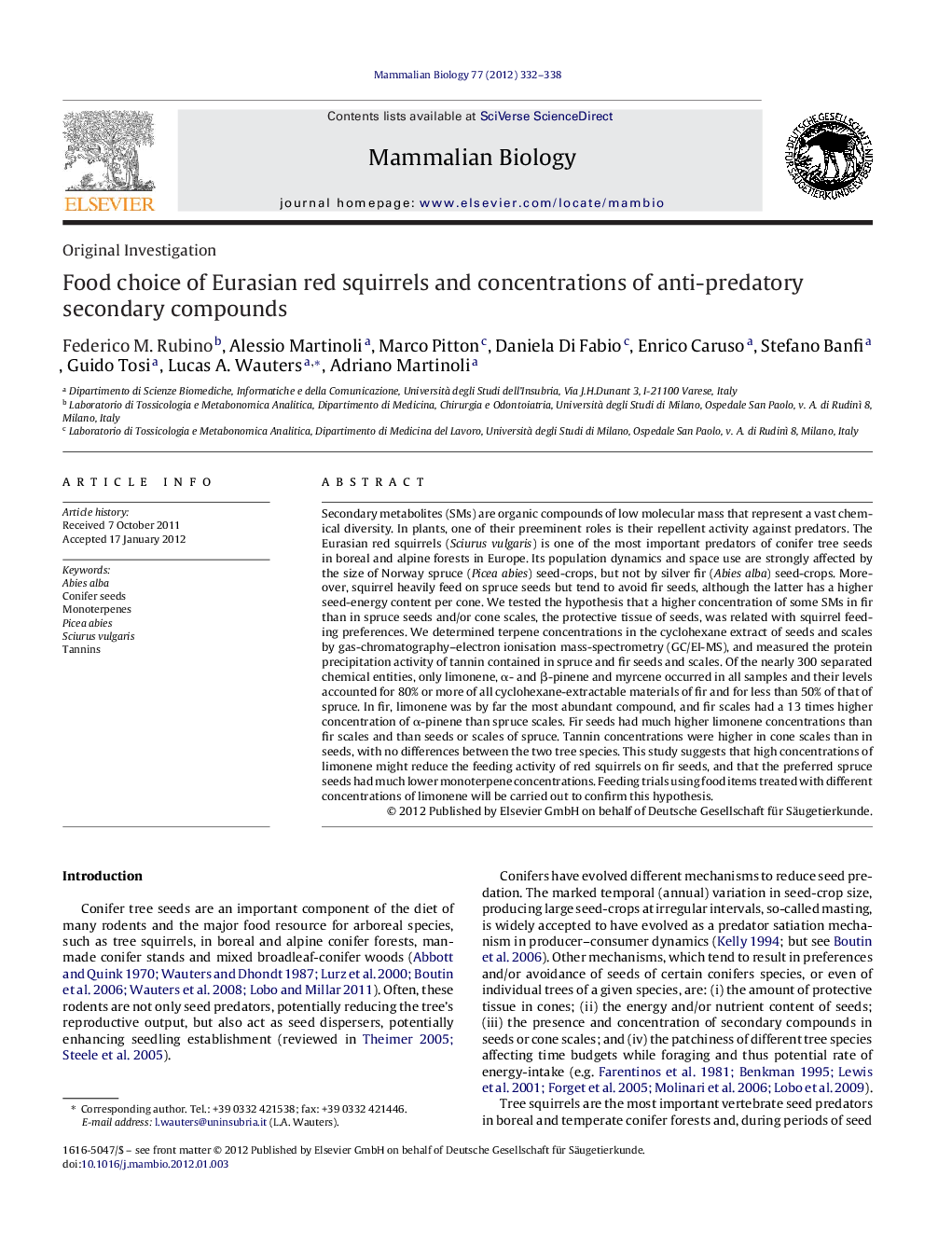| کد مقاله | کد نشریه | سال انتشار | مقاله انگلیسی | نسخه تمام متن |
|---|---|---|---|---|
| 2193841 | 1098402 | 2012 | 7 صفحه PDF | دانلود رایگان |

Secondary metabolites (SMs) are organic compounds of low molecular mass that represent a vast chemical diversity. In plants, one of their preeminent roles is their repellent activity against predators. The Eurasian red squirrels (Sciurus vulgaris) is one of the most important predators of conifer tree seeds in boreal and alpine forests in Europe. Its population dynamics and space use are strongly affected by the size of Norway spruce (Picea abies) seed-crops, but not by silver fir (Abies alba) seed-crops. Moreover, squirrel heavily feed on spruce seeds but tend to avoid fir seeds, although the latter has a higher seed-energy content per cone. We tested the hypothesis that a higher concentration of some SMs in fir than in spruce seeds and/or cone scales, the protective tissue of seeds, was related with squirrel feeding preferences. We determined terpene concentrations in the cyclohexane extract of seeds and scales by gas-chromatography–electron ionisation mass-spectrometry (GC/EI-MS), and measured the protein precipitation activity of tannin contained in spruce and fir seeds and scales. Of the nearly 300 separated chemical entities, only limonene, α- and β-pinene and myrcene occurred in all samples and their levels accounted for 80% or more of all cyclohexane-extractable materials of fir and for less than 50% of that of spruce. In fir, limonene was by far the most abundant compound, and fir scales had a 13 times higher concentration of α-pinene than spruce scales. Fir seeds had much higher limonene concentrations than fir scales and than seeds or scales of spruce. Tannin concentrations were higher in cone scales than in seeds, with no differences between the two tree species. This study suggests that high concentrations of limonene might reduce the feeding activity of red squirrels on fir seeds, and that the preferred spruce seeds had much lower monoterpene concentrations. Feeding trials using food items treated with different concentrations of limonene will be carried out to confirm this hypothesis.
Journal: Mammalian Biology - Zeitschrift für Säugetierkunde - Volume 77, Issue 5, September 2012, Pages 332–338